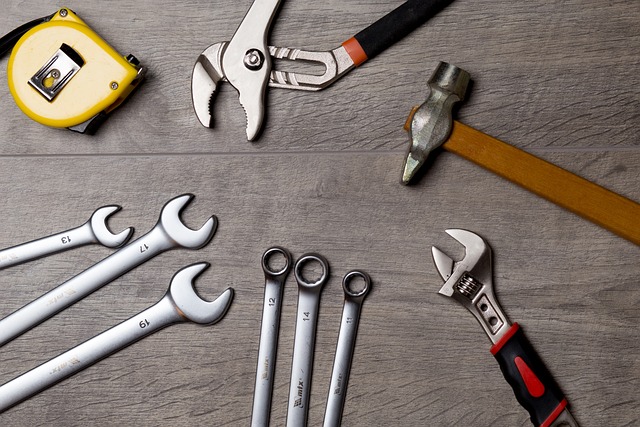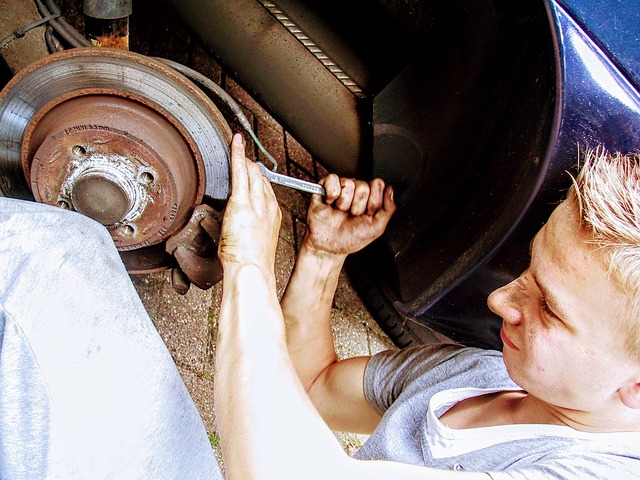Window replacement is a key aspect of home repair and maintenance, offering numerous benefits for energy efficiency, comfort, and curb appeal. This comprehensive guide explores the necessity of window replacement, delving into the process, materials, and styles available. We provide a step-by-step installation guide, highlighting best practices to ensure your new windows perform optimally. Learn how to choose the right windows tailored to your needs, enhancing your home’s value while saving on energy costs.
- Understanding Window Replacement: Why It's Necessary and Benefits for Your Home
- The Process of Window Installation: Step-by-Step Guide and Best Practices
- Choosing the Right Windows: Materials, Styles, and Energy Efficiency Considerations
Understanding Window Replacement: Why It's Necessary and Benefits for Your Home

Understanding Window Replacement: Why It’s Necessary and Benefits for Your Home
Window replacement is a significant aspect of home repair and maintenance, offering numerous advantages beyond aesthetics. Over time, windows can become damaged, inefficient, or outdated, impacting energy costs and the overall comfort of your living space. The need for replacement may arise from broken glass, drafts that lead to higher heating and cooling bills, or simply outdated styles that no longer align with modern design trends.
Benefits of window replacement include improved insulation, which can enhance energy efficiency and reduce utility expenses. Modern windows are designed with advanced coatings and sealants, providing better protection against temperature variations and external noise pollution. Furthermore, replacing old windows with newer models can contribute to a more sustainable home, as many contemporary options are manufactured with eco-friendly materials and designs that minimize environmental impact.
The Process of Window Installation: Step-by-Step Guide and Best Practices

Window installation is a crucial aspect of home repair and maintenance, offering both aesthetic and functional benefits. The process involves several meticulous steps to ensure a secure and efficient fit. Here’s a simplified guide:
1. Preparation: Begin by removing the old window, taking note of any measurements for reference. Clear the area, ensuring no debris or remnants from the previous installation hinder the new window’s placement. Prepare the new window by checking for any defects and ensuring it matches the required dimensions.
2. Sill and Frame Preparation: Level the window sill and ensure it’s properly supported. Apply a suitable sealant to the frame and sill, creating a barrier against moisture and pests. Position the window carefully, aligning it with the existing structure using shims if needed.
3. Glazing and Sealing: Insert the glass, ensuring it sits securely within the frame. Seal around the edges with weatherstripping or a suitable sealant to lock in efficiency. Use putty or caulk to fill any gaps, creating an airtight seal.
4. Final Touches: Fasten the window firmly using appropriate hardware, ensuring it’s secure yet easily operable. Check for any leaks and make adjustments as necessary. With these steps followed, your new window will enhance your home’s comfort and curb appeal, contributing to effective home repair and maintenance.
Choosing the Right Windows: Materials, Styles, and Energy Efficiency Considerations

When considering window replacement as part of your home repair and maintenance regimen, choosing the right windows is paramount. The first step involves selecting materials that offer durability and longevity, with options like vinyl, wood, or composite frames each having unique advantages. Vinyl windows are popular for their low maintenance, while wood provides excellent insulation properties and a classic aesthetic. Composite materials combine the best of both worlds, offering durability and energy efficiency.
Next, consider window styles to enhance your home’s visual appeal and functionality. From traditional double-hung windows to modern casement models, each style brings its own charm. Energy efficiency is another crucial factor; double-glazed or triple-glazed panes significantly reduce heat transfer, leading to lower heating and cooling costs. Look for windows with high-quality seals and low U-values to maximize insulation. Incorporating energy-efficient windows into your home repair and maintenance plan not only enhances comfort but also contributes to long-term savings.
Window replacement is an essential aspect of home repair and maintenance, offering both aesthetic and functional improvements. By understanding the benefits, familiarizing yourself with the installation process, and making informed choices regarding materials and styles, you can enhance your living space’s energy efficiency, comfort, and overall value. Remember, the right windows can transform your home, allowing you to enjoy improved lighting, better insulation, and reduced energy bills for years to come.














